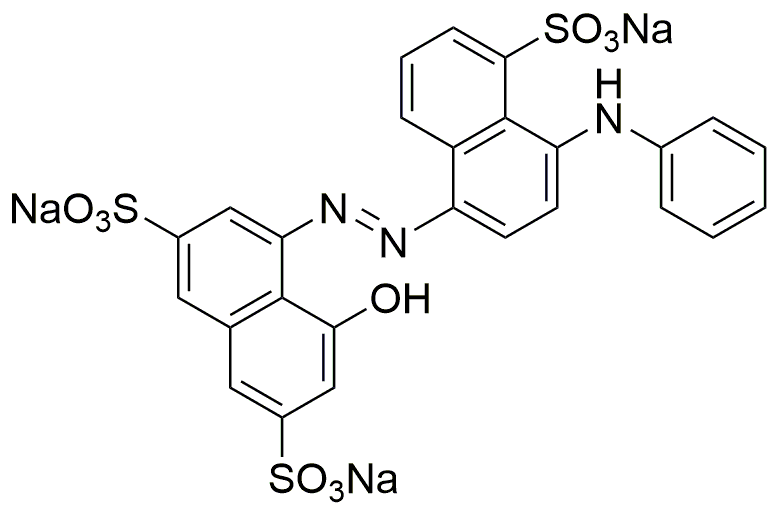Acid blue 92 is widely utilized in research focused on:
- Dyeing Textiles: This compound is commonly used in the textile industry for dyeing fabrics, providing vibrant blue shades that are both durable and colorfast.
- Biological Staining: In laboratories, Acid blue 92 serves as a biological stain, helping researchers visualize cellular structures and components under a microscope.
- Food Coloring: It is also applied in the food industry as a color additive, enhancing the visual appeal of various food products while meeting regulatory standards.
- Cosmetics: The compound is used in cosmetic formulations to impart color, ensuring products like shampoos and lotions are visually attractive to consumers.
- Research and Development: Acid blue 92 is valuable in developing new dyes and pigments, allowing chemists to explore innovative applications in various industries.
General Information
Properties
Safety and Regulations
Applications
Acid blue 92 is widely utilized in research focused on:
- Dyeing Textiles: This compound is commonly used in the textile industry for dyeing fabrics, providing vibrant blue shades that are both durable and colorfast.
- Biological Staining: In laboratories, Acid blue 92 serves as a biological stain, helping researchers visualize cellular structures and components under a microscope.
- Food Coloring: It is also applied in the food industry as a color additive, enhancing the visual appeal of various food products while meeting regulatory standards.
- Cosmetics: The compound is used in cosmetic formulations to impart color, ensuring products like shampoos and lotions are visually attractive to consumers.
- Research and Development: Acid blue 92 is valuable in developing new dyes and pigments, allowing chemists to explore innovative applications in various industries.
Documents
Safety Data Sheets (SDS)
The SDS provides comprehensive safety information on handling, storage, and disposal of the product.
Product Specification (PS)
The PS provides a comprehensive breakdown of the product’s properties, including chemical composition, physical state, purity, and storage requirements. It also details acceptable quality ranges and the product's intended applications.
Certificates of Analysis (COA)
Search for Certificates of Analysis (COA) by entering the products Lot Number. Lot and Batch Numbers can be found on a product’s label following the words ‘Lot’ or ‘Batch’.
*Catalog Number
*Lot Number
Certificates Of Origin (COO)
This COO confirms the country where the product was manufactured, and also details the materials and components used in it and whether it is derived from natural, synthetic, or other specific sources. This certificate may be required for customs, trade, and regulatory compliance.
*Catalog Number
*Lot Number
Safety Data Sheets (SDS)
The SDS provides comprehensive safety information on handling, storage, and disposal of the product.
DownloadProduct Specification (PS)
The PS provides a comprehensive breakdown of the product’s properties, including chemical composition, physical state, purity, and storage requirements. It also details acceptable quality ranges and the product's intended applications.
DownloadCertificates of Analysis (COA)
Search for Certificates of Analysis (COA) by entering the products Lot Number. Lot and Batch Numbers can be found on a product’s label following the words ‘Lot’ or ‘Batch’.
*Catalog Number
*Lot Number
Certificates Of Origin (COO)
This COO confirms the country where the product was manufactured, and also details the materials and components used in it and whether it is derived from natural, synthetic, or other specific sources. This certificate may be required for customs, trade, and regulatory compliance.


